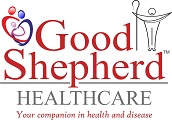“The most elegant of trousers, pyjamas and other fancy clothes, sometimes hide the most dangerous and ugly varicose veins”.
And that is an understatement.
Varicose veins are not just a cosmetic problem – of veins and legs looking ugly ; preventing a lady to wear her dresses and skirts with freedom, or a gent to wear his shorts without caution. They are a problem of poor circulation of blood in the legs and at risk of serious complications like vein clot formation, bleeding and chronic ulcers and pigmented skin.
What are Varicose Veins ?
Varicose veins are large and tortous veins that usually occur in the legs. They usually develop due to weakness of the vein wall and loss of valve function caused by a family predisposition, prolonged standing or certain other conditions.
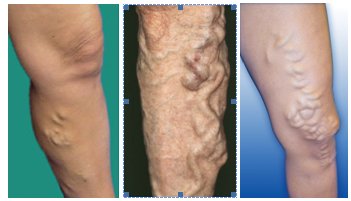

They are usually located on the calf and thigh, and continue to enlarge, and in the course of time, they may become elongated, twisted, pouched and thickened.
What are the Risk Factors for Varicose Veins ?
The most important factors leading to the development of varicose veins include:
• Heredity
• Prolonged standing
• Heavy lifting (weight trainers in gyms beware !)
• Prior superficial or deep vein clots
• Female gender
• Multiple pregnancies
How are Varicose Veins diagnosed ? Can they be diagnosed in your bedroom ?
The diagnosis of varicose veins is made primarily by physical examination alone ! The truth is that you can make a provisional diagnosis of varicose veins yourself at home. Yes, you read it right ! You can diagnose varicose veins yourself in the comfort of your own bedroom.
- Do you have cramps in your legs – early in the morning, or swelling of your feet in the evenings ?
- Are you leg veins prominent on standing, decrease when you lie down on the bed, and disappear when you raise your legs above the bed ?
- Do your parents or siblings have varicose veins, piles, or varicocele/vulval varices ?
If your answer to any of the above three questions is “YES”, chances are that you suffer from venous reflux – blood flowing in opposite direction of normal flow ; and are at a risk of complications.
How to confirm the diagnosis of Venous Reflux and Varicose Veins ?
The most accurate and detailed test is a Colour Doppler Ultrasound Scan of the Lower Limb/s. This will tell us whether the vein valves are working properly and rule out any clot in the inner veins.
This is an OPD and painless diagnostic test.
Do all Varicose Veins need treatment ? And does treatment mean only Surgery ?
Yes and No. Treatment does not always mean a procedure, an intervention or a surgery.
In the early stages, it denotes use of medical compression stockings with or without a medication. In the later stages, some intervention is generally needed to prevent LIFE-THREATENING complications like Bleeding, Thrombosis and Pulmonary Embolism.
However, Varicose veins may be entirely symptom-free and cause no health problems. Treatment in such cases is often for cosmetic purposes.
Are Varicose Veins hereditary ?
Yes and No. There is a familial tendency for varicose veins. There have been reported absence of a valve in the groin vein at birth in a certain percentage of patients.
The causes of varicose veins are however best grouped as primary, secondary, or congenital. Primary Varicose Veins develop as a result of an inherent weakness in the wall of the vein. Secondary Varicose Veins that develop after trauma or deep vein thrombosis are of secondary cause.
Congenital Varicose Veins are due to disorders in the natural development of the venous system, and usually are part of a vascular malformation in the limb, present at birth.
Can you prevent Varicose Veins?
You can’t do anything about your heredity, age or gender. However, you can help delay the development of varicose veins or keep them from progressing.
• Be active. Moving leg muscles keeps the blood
flowing.
• To temporarily relieve symptoms, lie down and raise your legs at least six inches above the level of your heart. Do this for ten minutes a few times each day.
• Maintain a normal body weight.
• Wear prescription compression stockings as specified by your doctor, especially during pregnancy.
• See a qualified doctor who can diagnose the cause of your varicose veins, the sources of venous reflux in your legs and offer a variety of treatment options.
What are the treatment options for Varicose Veins ?
The role of medications or mechanical support – like stockings, is only temporary while longer lasting results are better obtained with a number of minimally invasive techniques.
Endovenous Ablation therapies – Laser, Radiofrequency or Glue, are the recommended ‘Gold Standard’ of treatment at present.
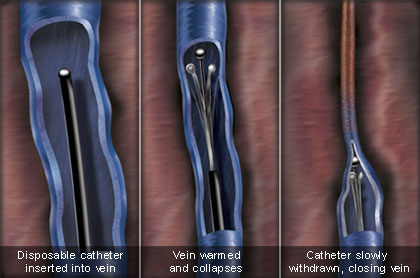
These involve :
- Hospitalisation less than a day,
- Are done under Local Anesthesia,
- Involve no surgical cuts.
- Patient is on his or her feet in 10 minutes and
- Involve no bed rest at home.
Other treatment options for varicose veins include some form of surgical vein procedures like Ligation-Stripping and Phlebectomies.
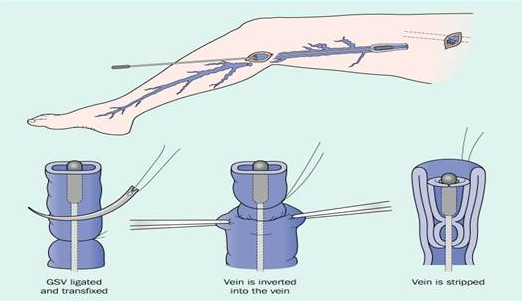
Foam Sclerotherapy is done as a part of the treatment or as a standalone treatment in selected cases.
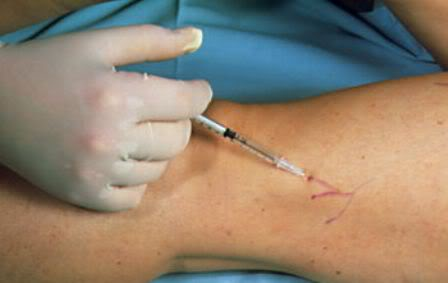
These are generally Out-Patient, Day-Care Surgery or One-Day Surgery procedures.
Do Varicose Veins recur after Laser or Surgery ?
A Standard Laser or Surgery Procedure generally is not associated for a recurrence in the areas where the procedure has been performed.
A venous procedure is generally intended to take care of incompetent valves and perforators.
Fresh varicose veins can however occur in untreated areas – if the patient has gained excess weight or due attention has not been given to the precautions suggested above.
Did we clear your doubts ? Or do you feel the need to know more or schedule a consultation ?
Feel free to book an appointment.
Live Better ; Live Healthy.




